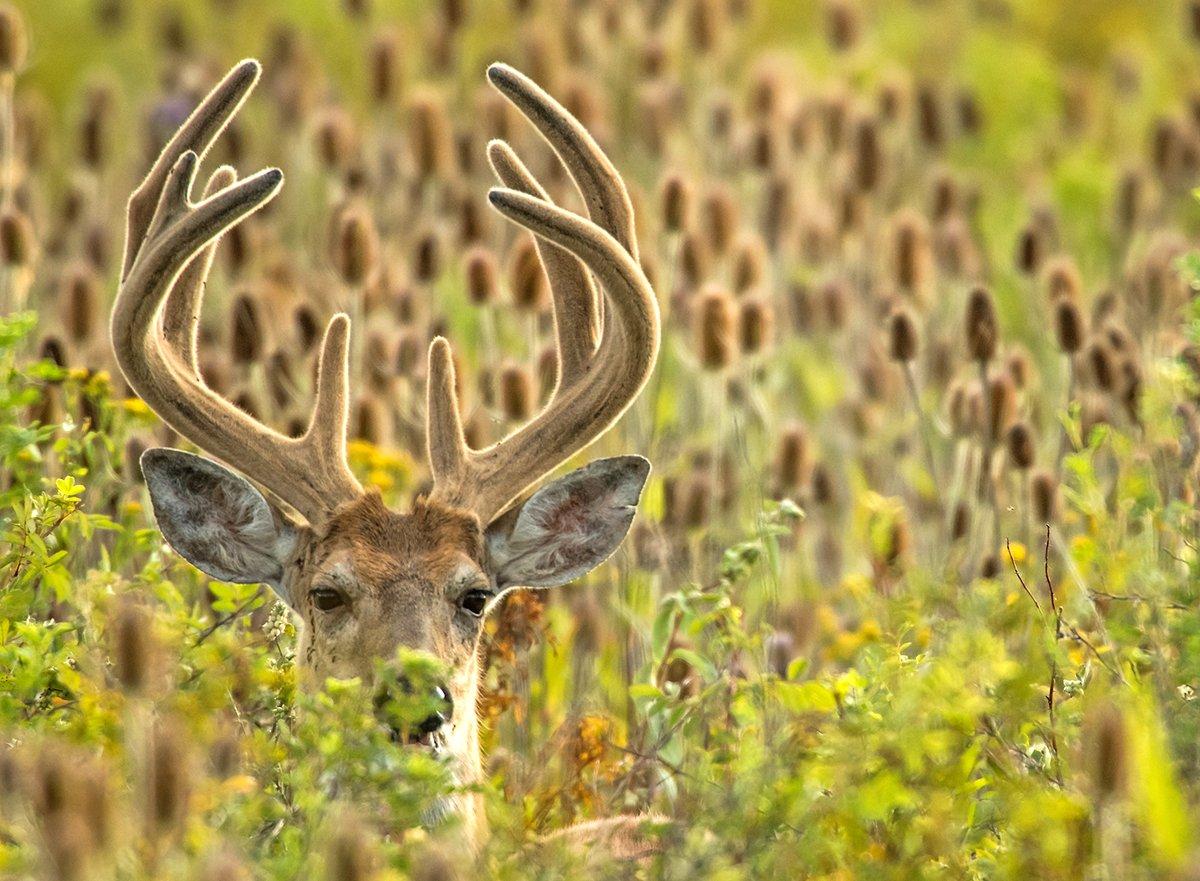These advanced, quick-hit tips might help you shoot a buck this opening week
You scout and glass a couple of small bucks, a decent 8-pointer, and a shooter 10 coming to a beanfield like clockwork in the evenings.
Will those bucks (especially the 10-point), be around when bow season opens in a few weeks?
That bachelor's club will start to break up in mid-September, but a few of the bucks may still run together into October. In what is known as the fall shuffle, some of the bucks will shift a mile or more to their winter range while some of them — maybe that big 10 — will stay right there, close to where you're spotting them now. Keep glassing the fields and edges, and hang a tree stand or two in the nearby woods. Even if the 10-pointer leaves, another good buck you've never seen might show up during the shuffling period.
(Don't Miss: What Really Kills Whitetail Fawns?)
It's hot, and deer aren't hitting the corn and beans like they usually do. What to do?
Biologists say that during an extended stretch of warm weather, deer prefer green forage (forbs, browse, etc.) and might forgo corn or even soybeans. Grains are rich in carbohydrates, and digesting them generates more body heat, something deer don't want or need when it's hot.
Strategy-wise, move off ag fields, and set some stands back in the surrounding woods near small clover plots, tangles of briars, weedy thickets, and similar spots where does and bucks will browse greens both morning and afternoon. Another good bet: Set a stand in a shady creek bottom leading to or from a green plot or browse thicket.
What sign is most important in early season?
Studies show that an area's mature and dominant bucks blaze most of the early rubs, which will start showing up in early September. Scout and look for pockets of fresh, gleaming rubs. In widening circles, scout 50 to 100 out from those cluster rubs and find a creek crossing, small draw or green edge that might funnel a buck close, and hang your stand there. Deep 3-inch tracks in dirt or mud near fresh rubs seals the deal that a good buck is working the area.
(Buy Alert: EZ Bow Sling)
How high should you hang your bow stand?
A good rule of thumb all season is 18 to 20 feet, which is high enough to rise above the sight and scent lines of deer, but low enough to feel safe and stable while standing and shooting. But in late-summer and early fall, when limbs droop with thick green leaves, you can sometimes see and shoot better from a lower height, say 16 or even 15 feet.
Set your ladder steps to run 20 feet or more up a tree like you typically do. Then climb, and starting at around 15 feet, look out and survey your sight lines and shooting lanes. Don't worry about some arbitrary height; set your stand where you can see and shoot the best.
You'll likely have to trim several thick, leafy limbs out front and to the sides. I shoot right-handed and always trim one shooting lane to my left and back in case a buck sneaks in from behind. Gather the limbs you clip and drag them 60 yards or more downwind where deer won't smell your scent on them.
What is the best way to access a treestand on the edge of beans or a cut corn field?
Head in early, 2 p.m. at the latest, and access your stand from the field side, from an angle where the wind blows from out of the woods behind your stand and into your face, or at least crossways down one side of the field. Sometimes you have no choice but to walk straight across the wide open to a stand, but use a ditch or edge as cover when you can, in case some deer are bedded tight to the field. Climb up quietly and get settled in early.
On evenings when shooting light wanes and you're left with no shot, sit an extra 20 minutes and glass deer that still cruise toward a field and into it. You might spot a whopper buck coming in late that you've never seen before, and that's good intel.
When the deer move well out into the field and the coast is clear, slip out of your stand and walk an exit route that will take you 20 yards or so back into the woods and away from the feeding area. Circle back to your truck hidden and without spooking any deer, which minimizes pressure and ups your odds for the next evening.
(Don't Miss: Have You Ever Seen a Melanistic Whitetail?)







